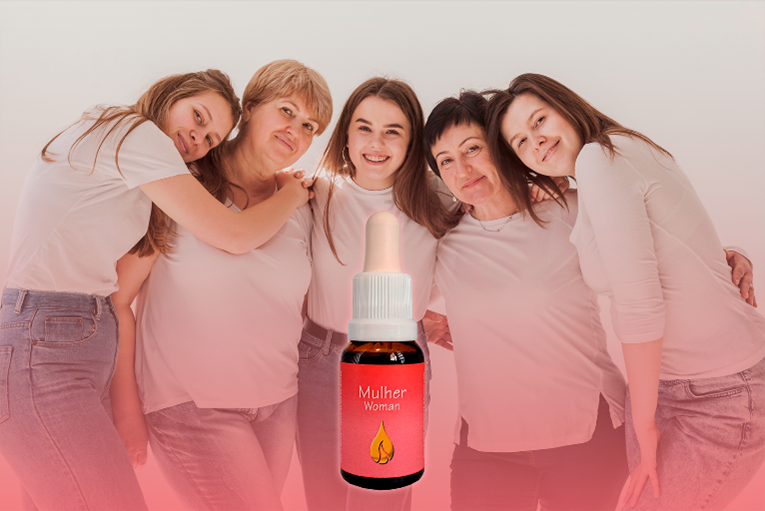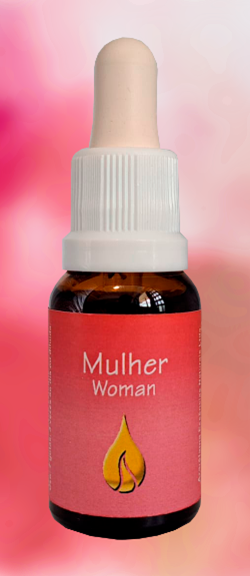SER MULHER: Um Trabalho Social em grupo para tratar sinais de TPM e Menopausa com o Composto Floral Mulher da Ararêtama
- Redação Ararêtama
- 17 de dez. de 2024
- 4 min de leitura
Realizado na ONG Rede Postinho de Saúde para Mulheres (localizada no complexo PPG, RJ).
Autoras: Ana Lúcia Pedrozo, Flávia Bertolossi e Sabrina Santana.
Sandra Epstein produziu a essência composta Mulher especialmente para esse trabalho.

INTRODUÇÃO:
Os sinais físicos e emocionais da TPM, menstruação e menopausa, muitas vezes interferem na rotina da mulher.
Podem gerar prejuízos no trabalho e nas relações interpessoais.
Tema frequente nos atendimentos individuais e os resultados do tratamento com a terapia floral, positivos.
Criamos o grupo terapêutico Ser Mulher para ampliar os benefícios à população feminina dessa comunidade.
OBJETIVOS:
Aumentar o número de mulheres atendidas.
Avaliar a eficácia do composto floral Mulher para tratar os sinais de TPM e menopausa.
Melhorar o bem-estar físico, emocional e psicossocial da população feminina do PPG.
MÉTODO:
Foram selecionadas 15 mulheres com sintomas de TPM e menopausa, com idades entre 20 e 60 anos.
Encontros mensais com duração de 2 horas, durante 4 meses.
Recebiam o composto floral em solução de uso.
Listas com sintomas de TPM ou menopausa, para entendimento e acompanhamento dos sintomas ao longo do tratamento e para avaliação dos resultados.
Coleta de relatos durante e ao final do trabalho.
DEPOIMENTO
A.P, 35 anos: “Eu tinha muitos sintomas de TPM, um deles enxaqueca, muito forte, que me derrubava mesmo, ficava quase de cama, às vezes tendo que ir para o hospital. Diminuiu quase 100%. Não tenho mais na época da menstruação. Melhorou a acne, tinha vergonha por ter 35 anos. Tinha muita ansiedade e melhorou (apesar do histórico de ansiedade não estar relacionado só a TPM). Sempre tive muita ansiedade, de ir para o corpo mesmo, tremedeira, achar que ia desmaiar, e piorou quando tive filho. Com o uso do floral, melhorou isso também.”
RELATOS
F.S. 35 anos, TPM: “Antes tinha vontade de morrer quando estava nesses dias, já até pensei em me matar. Isso passou.
M.F. 57 anos, avó: "Antes ficava muito irritada com as crianças, dava vontade de matar. Agora, estou tranquilinha. Também, me irritava muito o som que toca embaixo da minha casa, agora já consigo dormir.”
RESULTADOS:
Resultados positivos foram evidentes, com remissão parcial ou total da maioria dos sintomas, e consequente melhora do bem-estar físico e emocional, refletindo na rotina e nas relações dessas pessoas.
O trabalho em grupo propiciou atendimento a um número maior de mulheres dessa comunidade, reduzindo a fila de espera.
Melhora de sintomas não relacionados ao ciclo.
PERCEPÇÕES:
A vivência no grupo melhorou a percepção dos sintomas físicos e emocionais, que nem imaginavam fazer parte do ciclo no qual estavam vivendo.
Favoreceu uma aproximação de mulheres da mesma comunidade, cada relato era um ensinamento para todas, criando uma percepção de que não estavam sozinhas em meio aos desconfortos do ciclo.
Grupo misto permitiu uma troca rica de vivencias entre mulheres de gerações diferentes.

CONCLUSÃO:
O composto floral Mulher para sinais de TPM e menopausa mostrou-se eficaz, sugerindo seu uso individual ou em grupo.
A partir dos relatos e resultados, podemos inferir que esse trabalho proporcionou uma melhora no bem-estar, assim como na rotina e nas relações interpessoais dessas mulheres.
A melhora de sintomas não relacionados ao ciclo reprodutivo, sugere seu uso para outros contextos.
CONTATOS:
ANA LÚCIA PEDROZO - (21 99619 -1853) alpedrozo1@gmail.com
SANDRA EPSTEIN - araretama01@gmail.com
FLAVIA BERTOLOSSI - flaviabertolossi@gmail.com
SABRINA VIEIRA - sa_vieira@hotmail.com
Held at the NGO Rede Postinho de Saúde para Mulheres (located in the PPG complex, Rio de Janeiro, Brazil).
Authors: Ana Lúcia Pedrozo, Flávia Bertolossi, and Sabrina Santana.
Sandra Epstein produced the floral essence Mulher specifically for this initiative.
INTRODUCTION:
The physical and emotional symptoms of PMS, menstruation, and menopause often interfere with women's daily routines.
They can negatively impact work performance and interpersonal relationships.
These issues frequently arise during individual therapy sessions, where the results of floral therapy have been positive.
We created the therapeutic group Ser Mulher to extend these benefits to the female population of this community.
OBJECTIVES:
Increase the number of women receiving treatment.
Evaluate the effectiveness of the floral essence Mulher in addressing PMS and menopause symptoms.
Improve the physical, emotional, and psychosocial well-being of the female population in the PPG complex.
METHOD:
Fifteen women aged 20 to 60 with PMS and menopause symptoms were selected.
Monthly 2-hour sessions were held over four months.
Participants received the floral essence solution for personal use.
Symptom lists for PMS and menopause were used to track and assess progress throughout treatment.
Testimonies were collected during and after the sessions.
TESTIMONIAL
A.P., 35 years old:"I used to experience severe PMS symptoms, including debilitating migraines that left me bedridden, sometimes requiring hospital visits. These have almost completely disappeared. I no longer get migraines during menstruation. My acne also improved, which was embarrassing at 35. I struggled with significant anxiety, which improved too (although my anxiety isn’t solely related to PMS). I’ve always had severe anxiety that caused physical symptoms like tremors and feelings of fainting, which worsened after I had my child. Using the floral essence has also helped with that."
PARTICIPANTS' FEEDBACK
F.S., 35 years old, PMS:"Before, I felt like dying during that time of the month, even having thoughts of suicide. That feeling is gone now."
M.F., 57 years old, grandmother:"I used to get extremely irritated with the kids; I felt like I could explode. Now I feel calm. I also used to be very annoyed by the loud music playing downstairs, but now I can sleep through it."
RESULTS:
Positive outcomes were evident, with partial or total remission of most symptoms. This led to improved physical and emotional well-being, enhancing participants’ daily routines and relationships.
The group format allowed more women in the community to be treated, reducing the waiting list.
Alleviation of symptoms unrelated to the reproductive cycle was also noted.
INSIGHTS:
Group sessions enhanced participants' awareness of physical and emotional symptoms, which they hadn’t associated with their cycles before.
Fostered a sense of community among women, where each testimony served as a learning experience, creating a shared understanding that they were not alone in facing these challenges.
The mixed-age group enabled meaningful exchanges of experiences between women from different generations.
CONCLUSION:
The floral essence Mulher proved effective in addressing PMS and menopause symptoms, supporting its use in both individual and group settings.
Based on the testimonies and results, this initiative contributed to improvements in well-being, daily routines, and interpersonal relationships.
The reduction of symptoms unrelated to the reproductive cycle suggests potential applications in other contexts.
CONTACTS:
Ana Lúcia Pedrozo – (21 99619-1853) alpedrozo1@gmail.com
Sandra Epstein – araretama01@gmail.com
Flávia Bertolossi – flaviabertolossi@gmail.com
Sabrina Vieira – sa_vieira@hotmail.com










Comentários